It appears Justin Watson was no training-camp fluke. The third-year receiver who shed about 10 pounds in the offseason and opened eyes with his increased speed on the practice field was – at least at his peak moment – the fastest man on the field for the Tampa Bay Buccaneers Sunday.
The Buccaneers lost their 2020 season opener to the Saints, 34-23, in the Louisiana Superdome on Sunday. Tampa Bay actually out-gained the Saints, 310 net yards to 271, and held such superstars as Drew Brees and Michael Thomas well below their usual output. However, the Saints created all three of the game's takeaways, repeatedly swung field position with special teams wins and had three sacks to one for the Bucs' defense.
Those surface numbers are enough to tell the story of the Saints' 11-point decision. Still, thanks to the NFL's Next Gen stats, we can look at some aspects of the players' performance that goes beyond what they put in the stat sheet. Among those are how fast, how far and how often each player ran.
View the top photos of Tampa Bay's Week 1 matchup against New Orleans.

Bucs vs. Saints

Bucs vs. Saints

Bucs vs. Saints

Bucs vs. Saints

Bucs vs. Saints
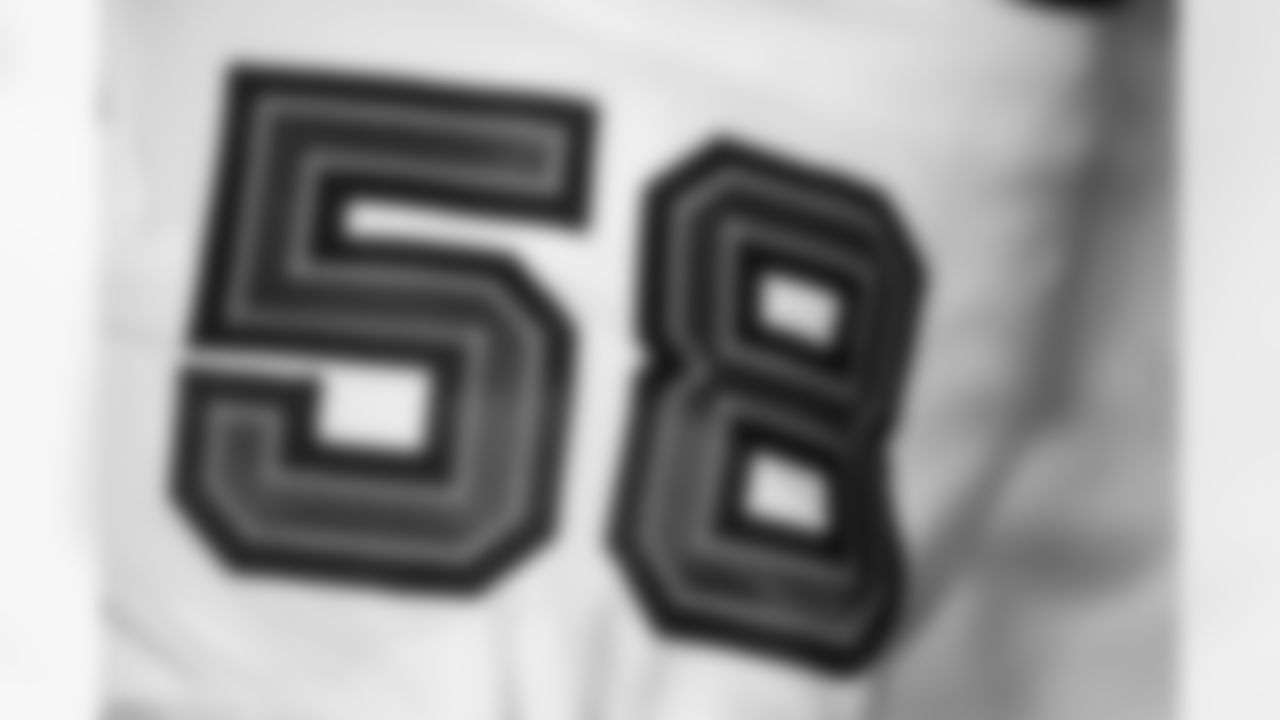
NEW ORLEANS, LA - SEPTEMBER 13, 2020 - Jersey numbers before the game between the Tampa Bay Buccaneers and New Orleans Saints at Mercedes Benz Superdome. The Buccaneers lost the game, 34-23. Photo By Kyle Zedaker/Tampa Bay Buccaneers






NEW ORLEANS, LA - SEPTEMBER 13, 2020 - NFLPA message to players regarding social justice before the game between the Tampa Bay Buccaneers and New Orleans Saints at Mercedes Benz Superdome. The Buccaneers lost the game, 34-23. Photo By Kyle Zedaker/Tampa Bay Buccaneers

NEW ORLEANS, LA - SEPTEMBER 13, 2020 - The Tampa Bay Buccaneers locker room with plexiglass between lockers before the game between the Tampa Bay Buccaneers and New Orleans Saints at Mercedes Benz Superdome. The Buccaneers lost the game, 34-23. Photo By Kyle Zedaker/Tampa Bay Buccaneers

NEW ORLEANS, LA - SEPTEMBER 13, 2020 - Mercedes-Benz Superdowm before the game between the Tampa Bay Buccaneers and New Orleans Saints. The Buccaneers lost the game, 34-23. Photo By Kyle Zedaker/Tampa Bay Buccaneers

NEW ORLEANS, LA - SEPTEMBER 13, 2020 - Head Coach Bruce Arians of the Tampa Bay Buccaneers arrives before the game between the Tampa Bay Buccaneers and New Orleans Saints at Mercedes Benz Superdome. The Buccaneers lost the game, 34-23. Photo By Kyle Zedaker/Tampa Bay Buccaneers

NEW ORLEANS, LA - SEPTEMBER 13, 2020 - Quarterback Tom Brady #12 of the Tampa Bay Buccaneers arrives before the game between the Tampa Bay Buccaneers and New Orleans Saints at Mercedes Benz Superdome. The Buccaneers lost the game, 34-23. Photo By Kyle Zedaker/Tampa Bay Buccaneers

NEW ORLEANS, LA - SEPTEMBER 13, 2020 - Punter Bradley Pinion #8 of the Tampa Bay Buccaneers before the game between the Tampa Bay Buccaneers and New Orleans Saints at Mercedes Benz Superdome. The Buccaneers lost the game, 34-23. Photo By Kyle Zedaker/Tampa Bay Buccaneers

NEW ORLEANS, LA - SEPTEMBER 13, 2020 - Social justice shirt before the game between the Tampa Bay Buccaneers and New Orleans Saints at Mercedes Benz Superdome. The Buccaneers lost the game, 34-23. Photo By Kyle Zedaker/Tampa Bay Buccaneers

NEW ORLEANS, LA - SEPTEMBER 13, 2020 - Inside Linebacker Devin White #45 of the Tampa Bay Buccaneers arrives before the game between the Tampa Bay Buccaneers and New Orleans Saints at Mercedes Benz Superdome. The Buccaneers lost the game, 34-23. Photo By Kyle Zedaker/Tampa Bay Buccaneers

NEW ORLEANS, LA - SEPTEMBER 13, 2020 - Tight End Rob Gronkowski #87 of the Tampa Bay Buccaneers before the game between the Tampa Bay Buccaneers and New Orleans Saints at Mercedes Benz Superdome. The Buccaneers lost the game, 34-23. Photo By Kyle Zedaker/Tampa Bay Buccaneers

NEW ORLEANS, LA - SEPTEMBER 13, 2020 - Running Back Leonard Fournette #28 of the Tampa Bay Buccaneers arrives before the game between the Tampa Bay Buccaneers and New Orleans Saints at Mercedes Benz Superdome. The Buccaneers lost the game, 34-23. Photo By Kyle Zedaker/Tampa Bay Buccaneers

NEW ORLEANS, LA - SEPTEMBER 13, 2020 - Cornerback Sean Murphy-Bunting #23 of the Tampa Bay Buccaneers before the game between the Tampa Bay Buccaneers and New Orleans Saints at Mercedes Benz Superdome. The Buccaneers lost the game, 34-23. Photo By Kyle Zedaker/Tampa Bay Buccaneers

NEW ORLEANS, LA - SEPTEMBER 13, 2020 - Wide Receiver Mike Evans #13 of the Tampa Bay Buccaneers before the game between the Tampa Bay Buccaneers and New Orleans Saints at Mercedes Benz Superdome. The Buccaneers lost the game, 34-23. Photo By Kyle Zedaker/Tampa Bay Buccaneers

NEW ORLEANS, LA - SEPTEMBER 13, 2020 - Outside Linebacker Shaquil Barrett #58 of the Tampa Bay Buccaneers arrives before the game between the Tampa Bay Buccaneers and New Orleans Saints at Mercedes Benz Superdome. The Buccaneers lost the game, 34-23. Photo By Kyle Zedaker/Tampa Bay Buccaneers

NEW ORLEANS, LA - SEPTEMBER 13, 2020 - Guard Alex Cappa #65 of the Tampa Bay Buccaneers before the game between the Tampa Bay Buccaneers and New Orleans Saints at Mercedes Benz Superdome. The Buccaneers lost the game, 34-23. Photo By Kyle Zedaker/Tampa Bay Buccaneers
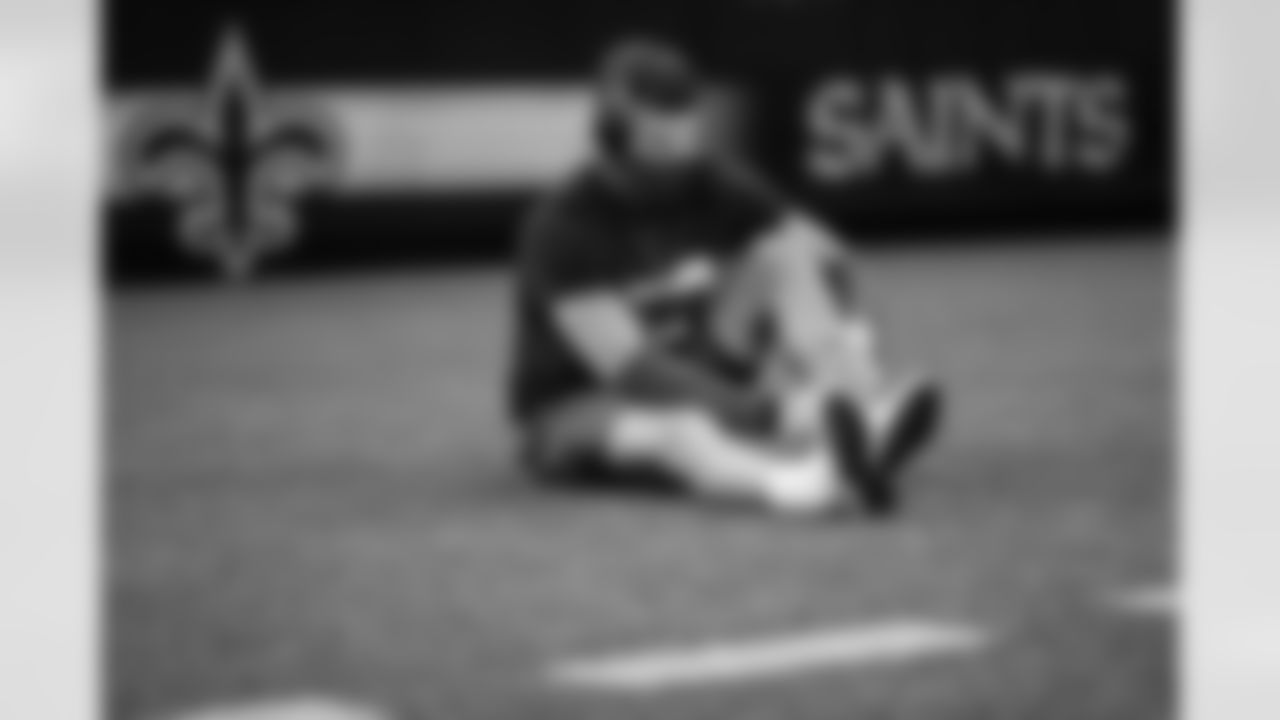
NEW ORLEANS, LA - SEPTEMBER 13, 2020 - Inside Linebacker Jack Cichy #48 of the Tampa Bay Buccaneers before the game between the Tampa Bay Buccaneers and New Orleans Saints at Mercedes Benz Superdome. The Buccaneers lost the game, 34-23. Photo By Kyle Zedaker/Tampa Bay Buccaneers

NEW ORLEANS, LA - SEPTEMBER 13, 2020 - Head Coach Bruce Arians and General Manager Jason Licht during the game between the Tampa Bay Buccaneers and New Orleans Saints at Mercedes Benz Superdome. The Buccaneers lost the game, 34-23. Photo By Kyle Zedaker/Tampa Bay Buccaneers

NEW ORLEANS, LA - SEPTEMBER 13, 2020 - Cornerback Carlton Davis #24 of the Tampa Bay Buccaneers before the game between the Tampa Bay Buccaneers and New Orleans Saints at Mercedes Benz Superdome. The Buccaneers lost the game, 34-23. Photo By Kyle Zedaker/Tampa Bay Buccaneers

NEW ORLEANS, LA - SEPTEMBER 13, 2020 - Inside Linebacker Devin White #45 of the Tampa Bay Buccaneers before the game between the Tampa Bay Buccaneers and New Orleans Saints at Mercedes Benz Superdome. The Buccaneers lost the game, 34-23. Photo By Kyle Zedaker/Tampa Bay Buccaneers

NEW ORLEANS, LA - SEPTEMBER 13, 2020 - Tight End Cameron Brate #84 of the Tampa Bay Buccaneers before the game between the Tampa Bay Buccaneers and New Orleans Saints at Mercedes Benz Superdome. The Buccaneers lost the game, 34-23. Photo By Kyle Zedaker/Tampa Bay Buccaneers

NEW ORLEANS, LA - SEPTEMBER 13, 2020 - Safety Antoine Winfield Jr. #31 of the Tampa Bay Buccaneers before the game between the Tampa Bay Buccaneers and New Orleans Saints at Mercedes Benz Superdome. The Buccaneers lost the game, 34-23. Photo By Kyle Zedaker/Tampa Bay Buccaneers

NEW ORLEANS, LA - SEPTEMBER 13, 2020 - Defensive Tackle Rakeem Nunez-Roches #56 of the Tampa Bay Buccaneers before the game between the Tampa Bay Buccaneers and New Orleans Saints at Mercedes Benz Superdome. The Buccaneers lost the game, 34-23. Photo By Kyle Zedaker/Tampa Bay Buccaneers

NEW ORLEANS, LA - SEPTEMBER 13, 2020 - Defensive Lineman Patrick O'Connor #79 and Defensive Lineman William Gholston #92 of the Tampa Bay Buccaneers before the game between the Tampa Bay Buccaneers and New Orleans Saints at Mercedes Benz Superdome. The Buccaneers lost the game, 34-23. Photo By Kyle Zedaker/Tampa Bay Buccaneers


NEW ORLEANS, LA - SEPTEMBER 13, 2020 - Defensive Tackle Rakeem Nunez-Roches #56 of the Tampa Bay Buccaneers before the game between the Tampa Bay Buccaneers and New Orleans Saints at Mercedes Benz Superdome. The Buccaneers lost the game, 34-23. Photo By Kyle Zedaker/Tampa Bay Buccaneers

NEW ORLEANS, LA - SEPTEMBER 13, 2020 - Assistant Defensive Line Coach Lori Locust of the Tampa Bay Buccaneers before the game between the Tampa Bay Buccaneers and New Orleans Saints at Mercedes Benz Superdome. The Buccaneers lost the game, 34-23. Photo By Kyle Zedaker/Tampa Bay Buccaneers

NEW ORLEANS, LA - SEPTEMBER 13, 2020 - Head Coach Bruce Arians of the Tampa Bay Buccaneers before the game between the Tampa Bay Buccaneers and New Orleans Saints at Mercedes Benz Superdome. The Buccaneers lost the game, 34-23. Photo By Kyle Zedaker/Tampa Bay Buccaneers

NEW ORLEANS, LA - SEPTEMBER 13, 2020 - The Tampa Bay Buccaneers before the game between the Tampa Bay Buccaneers and New Orleans Saints at Mercedes Benz Superdome. The Buccaneers lost the game, 34-23. Photo By Kyle Zedaker/Tampa Bay Buccaneers

NEW ORLEANS, LA - SEPTEMBER 13, 2020 - Quarterback Tom Brady #12 of the Tampa Bay Buccaneers before the game between the Tampa Bay Buccaneers and New Orleans Saints at Mercedes Benz Superdome. The Buccaneers lost the game, 34-23. Photo By Kyle Zedaker/Tampa Bay Buccaneers

NEW ORLEANS, LA - SEPTEMBER 13, 2020 - Quarterback Tom Brady #12 of the Tampa Bay Buccaneers before the game between the Tampa Bay Buccaneers and New Orleans Saints at Mercedes Benz Superdome. The Buccaneers lost the game, 34-23. Photo By Kyle Zedaker/Tampa Bay Buccaneers

NEW ORLEANS, LA - SEPTEMBER 13, 2020 - Quarterback Tom Brady #12 of the Tampa Bay Buccaneers before the game between the Tampa Bay Buccaneers and New Orleans Saints at Mercedes Benz Superdome. The Buccaneers lost the game, 34-23. Photo By Kyle Zedaker/Tampa Bay Buccaneers

NEW ORLEANS, LA - SEPTEMBER 13, 2020 - Cornerback Sean Murphy-Bunting #23 of the Tampa Bay Buccaneers before the game between the Tampa Bay Buccaneers and New Orleans Saints at Mercedes Benz Superdome. The Buccaneers lost the game, 34-23. Photo By Kyle Zedaker/Tampa Bay Buccaneers

NEW ORLEANS, LA - SEPTEMBER 13, 2020 - Defensive Tackle Rakeem Nunez-Roches #56 of the Tampa Bay Buccaneers before the game between the Tampa Bay Buccaneers and New Orleans Saints at Mercedes Benz Superdome. The Buccaneers lost the game, 34-23. Photo By Kyle Zedaker/Tampa Bay Buccaneers

NEW ORLEANS, LA - SEPTEMBER 13, 2020 - Running Back Ronald Jones II #27 of the Tampa Bay Buccaneers before the game between the Tampa Bay Buccaneers and New Orleans Saints at Mercedes Benz Superdome. The Buccaneers lost the game, 34-23. Photo By Kyle Zedaker/Tampa Bay Buccaneers


NEW ORLEANS, LA - SEPTEMBER 13, 2020 - Wide Receiver Mike Evans #13 and Quarterback Tom Brady #12 of the Tampa Bay Buccaneers before the game between the Tampa Bay Buccaneers and New Orleans Saints at Mercedes Benz Superdome. The Buccaneers lost the game, 34-23. Photo By Kyle Zedaker/Tampa Bay Buccaneers

NEW ORLEANS, LA - SEPTEMBER 13, 2020 - Inside Linebacker Lavonte David #54 of the Tampa Bay Buccaneers before the game between the Tampa Bay Buccaneers and New Orleans Saints at Mercedes Benz Superdome. The Buccaneers lost the game, 34-23. Photo By Kyle Zedaker/Tampa Bay Buccaneers

NEW ORLEANS, LA - SEPTEMBER 13, 2020 - Inside Linebacker Devin White #45 of the Tampa Bay Buccaneers before the game between the Tampa Bay Buccaneers and New Orleans Saints at Mercedes Benz Superdome. The Buccaneers lost the game, 34-23. Photo By Kyle Zedaker/Tampa Bay Buccaneers

NEW ORLEANS, LA - SEPTEMBER 13, 2020 - Inside Linebacker Lavonte David #54 of the Tampa Bay Buccaneers before the game between the Tampa Bay Buccaneers and New Orleans Saints at Mercedes Benz Superdome. The Buccaneers lost the game, 34-23. Photo By Kyle Zedaker/Tampa Bay Buccaneers

NEW ORLEANS, LA - SEPTEMBER 13, 2020 - The Tampa Bay Buccaneers during a moment of unity before the game between the Tampa Bay Buccaneers and New Orleans Saints at Mercedes Benz Superdome. The Buccaneers lost the game, 34-23. Photo By Kyle Zedaker/Tampa Bay Buccaneers

NEW ORLEANS, LA - SEPTEMBER 13, 2020 - Inside Linebacker Lavonte David #54, Inside Linebacker Devin White #45, Head Coach Bruce Arians, Wide Receiver Chris Godwin #14, and Wide Receiver Mike Evans #13 of the Tampa Bay Buccaneers during a moment of unity before the game between the Tampa Bay Buccaneers and New Orleans Saints at Mercedes Benz Superdome. The Buccaneers lost the game, 34-23. Photo By Kyle Zedaker/Tampa Bay Buccaneers

NEW ORLEANS, LA - SEPTEMBER 13, 2020 - Cornerback Ryan Smith #29, Outside Linebacker Jason Pierre-Paul #90, Inside Linebacker Lavonte David #54, Inside Linebacker Devin White #45, and Head Coach Bruce Arians of the Tampa Bay Buccaneers during a moment of unity before the game between the Tampa Bay Buccaneers and New Orleans Saints at Mercedes Benz Superdome. The Buccaneers lost the game, 34-23. Photo By Kyle Zedaker/Tampa Bay Buccaneers

NEW ORLEANS, LA - SEPTEMBER 13, 2020 - Safety Andrew Adams #26, Safety Jordan Whitehead #33, Inside Linebacker Kevin Minter #51, and Cornerback Jamel Dean #35 of the Tampa Bay Buccaneers during a moment of unity before the game between the Tampa Bay Buccaneers and New Orleans Saints at Mercedes Benz Superdome. The Buccaneers lost the game, 34-23. Photo By Kyle Zedaker/Tampa Bay Buccaneers

NEW ORLEANS, LA - SEPTEMBER 13, 2020 - The Tampa Bay Buccaneers during a moment of unity before the game between the Tampa Bay Buccaneers and New Orleans Saints at Mercedes Benz Superdome. The Buccaneers lost the game, 34-23. Photo By Kyle Zedaker/Tampa Bay Buccaneers

NEW ORLEANS, LA - SEPTEMBER 13, 2020 - Defensive Coordinator Todd Bowles, Quarterback Tom Brady #12, Quarterback Ryan Griffin #4, and Defensive Lineman William Gholston #92 of the Tampa Bay Buccaneers during a moment of unity before the game between the Tampa Bay Buccaneers and New Orleans Saints at Mercedes Benz Superdome. The Buccaneers lost the game, 34-23. Photo By Kyle Zedaker/Tampa Bay Buccaneers

NEW ORLEANS, LA - SEPTEMBER 13, 2020 - Quarterback Tom Brady #12, Quarterback Ryan Griffin #4, Defensive Lineman William Gholston #92, Cornerback Carlton Davis #24, and Director of Football Operations Shelton Quarles before the game between the Tampa Bay Buccaneers and New Orleans Saints at Mercedes Benz Superdome. The Buccaneers lost the game, 34-23. Photo By Kyle Zedaker/Tampa Bay Buccaneers
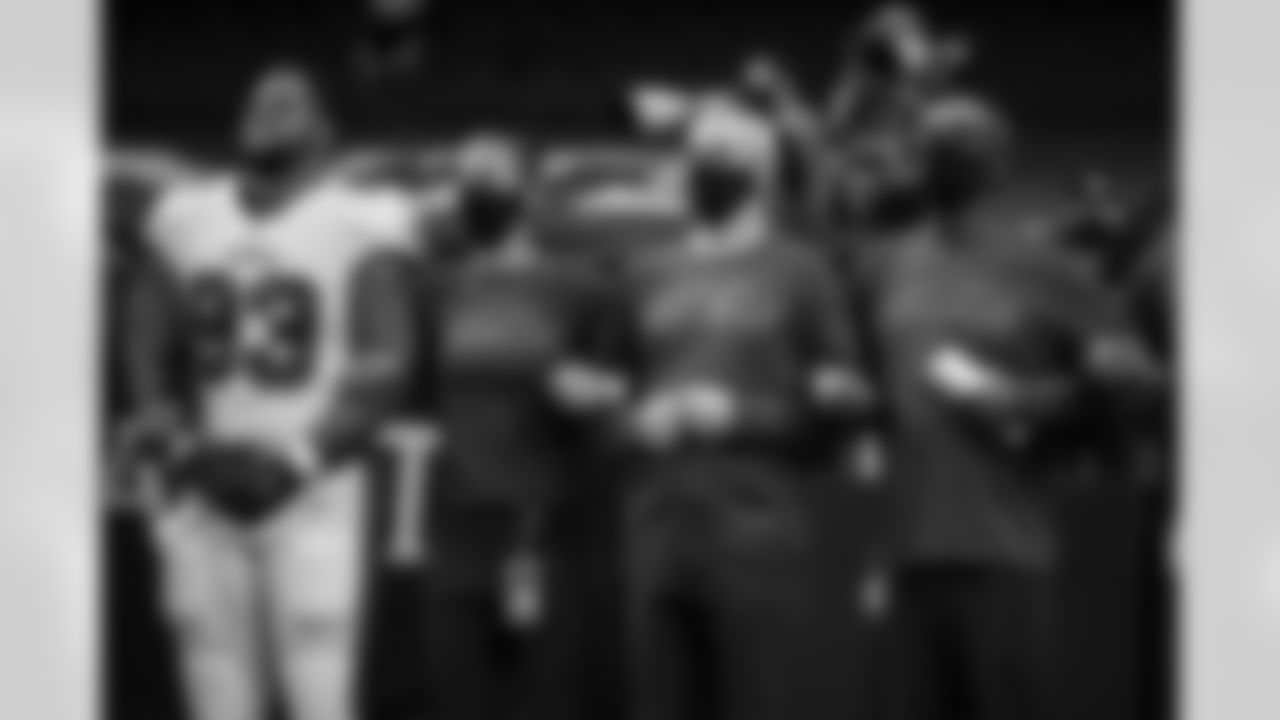
NEW ORLEANS, LA - SEPTEMBER 13, 2020 - Defensive Tackle Ndamukong Suh #93, Assistant Strength and Conditioning Coach Maral Javadifar, Specialist Coach Chris Boniol, and Special Teams Coordinator Keith Armstrong of the Tampa Bay Buccaneers during a moment of unity before the game between the Tampa Bay Buccaneers and New Orleans Saints at Mercedes Benz Superdome. The Buccaneers lost the game, 34-23. Photo By Kyle Zedaker/Tampa Bay Buccaneers

NEW ORLEANS, LA - SEPTEMBER 13, 2020 - The Tampa Bay Buccaneers during a moment of unity before the game between the Tampa Bay Buccaneers and New Orleans Saints at Mercedes Benz Superdome. The Buccaneers lost the game, 34-23. Photo By Kyle Zedaker/Tampa Bay Buccaneers

NEW ORLEANS, LA - SEPTEMBER 13, 2020 - Center Ryan Jensen #66 of the Tampa Bay Buccaneers during a moment of unity before the game between the Tampa Bay Buccaneers and New Orleans Saints at Mercedes Benz Superdome. The Buccaneers lost the game, 34-23. Photo By Kyle Zedaker/Tampa Bay Buccaneers

NEW ORLEANS, LA - SEPTEMBER 13, 2020 - The Tampa Bay Buccaneers during a moment of unity before the game between the Tampa Bay Buccaneers and New Orleans Saints at Mercedes Benz Superdome. The Buccaneers lost the game, 34-23. Photo By Kyle Zedaker/Tampa Bay Buccaneers

NEW ORLEANS, LA - SEPTEMBER 13, 2020 - Tackle Tristan Wirfs #78, Tight End Rob Gronkowski #87, and Guard Alex Cappa #65 of the Tampa Bay Buccaneers during a moment of unity before the game between the Tampa Bay Buccaneers and New Orleans Saints at Mercedes Benz Superdome. The Buccaneers lost the game, 34-23. Photo By Kyle Zedaker/Tampa Bay Buccaneers

NEW ORLEANS, LA - SEPTEMBER 13, 2020 - Quarterback Tom Brady #12 of the Tampa Bay Buccaneers prepares to take the field before the game between the Tampa Bay Buccaneers and New Orleans Saints at Mercedes Benz Superdome. The Buccaneers lost the game, 34-23. Photo By Kyle Zedaker/Tampa Bay Buccaneers

NEW ORLEANS, LA - SEPTEMBER 13, 2020 - Inside Linebacker Lavonte David #54 of the Tampa Bay Buccaneers before the game between the Tampa Bay Buccaneers and New Orleans Saints at Mercedes Benz Superdome. The Buccaneers lost the game, 34-23. Photo By Kyle Zedaker/Tampa Bay Buccaneers

NEW ORLEANS, LA - SEPTEMBER 13, 2020 - Inside Linebacker Lavonte David #54 of the Tampa Bay Buccaneers before the game between the Tampa Bay Buccaneers and New Orleans Saints at Mercedes Benz Superdome. The Buccaneers lost the game, 34-23. Photo By Kyle Zedaker/Tampa Bay Buccaneers

NEW ORLEANS, LA - SEPTEMBER 13, 2020 - Cornerback Sean Murphy-Bunting #23 and Inside Linebacker Devin White #45 of the Tampa Bay Buccaneers during the game between the Tampa Bay Buccaneers and New Orleans Saints at Mercedes Benz Superdome. The Buccaneers lost the game, 34-23. Photo By Kyle Zedaker/Tampa Bay Buccaneers

NEW ORLEANS, LA - SEPTEMBER 13, 2020 - Quarterback Tom Brady #12 of the Tampa Bay Buccaneers during the game between the Tampa Bay Buccaneers and New Orleans Saints at Mercedes Benz Superdome. The Buccaneers lost the game, 34-23. Photo By Kyle Zedaker/Tampa Bay Buccaneers

NEW ORLEANS, LA - SEPTEMBER 13, 2020 - Running Back Ronald Jones II #27 of the Tampa Bay Buccaneers during the game between the Tampa Bay Buccaneers and New Orleans Saints at Mercedes Benz Superdome. The Buccaneers lost the game, 34-23. Photo By Kyle Zedaker/Tampa Bay Buccaneers

NEW ORLEANS, LA - SEPTEMBER 13, 2020 - Quarterback Tom Brady #12 of the Tampa Bay Buccaneers during the game between the Tampa Bay Buccaneers and New Orleans Saints at Mercedes Benz Superdome. The Buccaneers lost the game, 34-23. Photo By Kyle Zedaker/Tampa Bay Buccaneers

NEW ORLEANS, LA - SEPTEMBER 13, 2020 - Quarterback Tom Brady #12 of the Tampa Bay Buccaneers celebrates a touchdown during the game between the Tampa Bay Buccaneers and New Orleans Saints at Mercedes Benz Superdome. The Buccaneers lost the game, 34-23. Photo By Kyle Zedaker/Tampa Bay Buccaneers

NEW ORLEANS, LA - SEPTEMBER 13, 2020 - Outside Linebacker Jason Pierre-Paul #90 of the Tampa Bay Buccaneers during the game between the Tampa Bay Buccaneers and New Orleans Saints at Mercedes Benz Superdome. The Buccaneers lost the game, 34-23. Photo By Kyle Zedaker/Tampa Bay Buccaneers


NEW ORLEANS, LA - SEPTEMBER 13, 2020 - Inside Linebacker Devin White #45 of the Tampa Bay Buccaneers during the game between the Tampa Bay Buccaneers and New Orleans Saints at Mercedes Benz Superdome. The Buccaneers lost the game, 34-23. Photo By Kyle Zedaker/Tampa Bay Buccaneers

NEW ORLEANS, LA - SEPTEMBER 13, 2020 - Inside Linebacker Devin White #45 of the Tampa Bay Buccaneers during the game between the Tampa Bay Buccaneers and New Orleans Saints at Mercedes Benz Superdome. The Buccaneers lost the game, 34-23. Photo By Kyle Zedaker/Tampa Bay Buccaneers

NEW ORLEANS, LA - SEPTEMBER 13, 2020 - Cornerback Jamel Dean #35 of the Tampa Bay Buccaneers during the game between the Tampa Bay Buccaneers and New Orleans Saints at Mercedes Benz Superdome. The Buccaneers lost the game, 34-23. Photo By Kyle Zedaker/Tampa Bay Buccaneers

NEW ORLEANS, LA - SEPTEMBER 13, 2020 - Defensive Lineman William Gholston #92 of the Tampa Bay Buccaneers during the game between the Tampa Bay Buccaneers and New Orleans Saints at Mercedes Benz Superdome. The Buccaneers lost the game, 34-23. Photo By Kyle Zedaker/Tampa Bay Buccaneers

NEW ORLEANS, LA - SEPTEMBER 13, 2020 - Defensive Lineman William Gholston #92 of the Tampa Bay Buccaneers during the game between the Tampa Bay Buccaneers and New Orleans Saints at Mercedes Benz Superdome. The Buccaneers lost the game, 34-23. Photo By Kyle Zedaker/Tampa Bay Buccaneers

NEW ORLEANS, LA - SEPTEMBER 13, 2020 - Head Coach Bruce Arians of the Tampa Bay Buccaneers during the game between the Tampa Bay Buccaneers and New Orleans Saints at Mercedes Benz Superdome. The Buccaneers lost the game, 34-23. Photo By Kyle Zedaker/Tampa Bay Buccaneers

NEW ORLEANS, LA - SEPTEMBER 13, 2020 - Quarterback Tom Brady #12 of the Tampa Bay Buccaneers during the game between the Tampa Bay Buccaneers and New Orleans Saints at Mercedes Benz Superdome. The Buccaneers lost the game, 34-23. Photo By Kyle Zedaker/Tampa Bay Buccaneers

NEW ORLEANS, LA - SEPTEMBER 13, 2020 - Outside Linebacker Anthony Nelson #98 of the Tampa Bay Buccaneers during the game between the Tampa Bay Buccaneers and New Orleans Saints at Mercedes Benz Superdome. The Buccaneers lost the game, 34-23. Photo By Kyle Zedaker/Tampa Bay Buccaneers

NEW ORLEANS, LA - SEPTEMBER 13, 2020 - Safety Jordan Whitehead #33 of the Tampa Bay Buccaneers during the game between the Tampa Bay Buccaneers and New Orleans Saints at Mercedes Benz Superdome. The Buccaneers lost the game, 34-23. Photo By Kyle Zedaker/Tampa Bay Buccaneers

NEW ORLEANS, LA - SEPTEMBER 13, 2020 - Outside Linebacker Shaquil Barrett #58 of the Tampa Bay Buccaneers during the game between the Tampa Bay Buccaneers and New Orleans Saints at Mercedes Benz Superdome. The Buccaneers lost the game, 34-23. Photo By Kyle Zedaker/Tampa Bay Buccaneers

NEW ORLEANS, LA - SEPTEMBER 13, 2020 - Inside Linebacker Devin White #45 of the Tampa Bay Buccaneers during the game between the Tampa Bay Buccaneers and New Orleans Saints at Mercedes Benz Superdome. The Buccaneers lost the game, 34-23. Photo By Kyle Zedaker/Tampa Bay Buccaneers

NEW ORLEANS, LA - SEPTEMBER 13, 2020 - Quarterback Tom Brady #12 of the Tampa Bay Buccaneers during the game between the Tampa Bay Buccaneers and New Orleans Saints at Mercedes Benz Superdome. The Buccaneers lost the game, 34-23. Photo By Kyle Zedaker/Tampa Bay Buccaneers

NEW ORLEANS, LA - SEPTEMBER 13, 2020 - Quarterback Tom Brady #12 of the Tampa Bay Buccaneers during the game between the Tampa Bay Buccaneers and New Orleans Saints at Mercedes Benz Superdome. The Buccaneers lost the game, 34-23. Photo By Kyle Zedaker/Tampa Bay Buccaneers
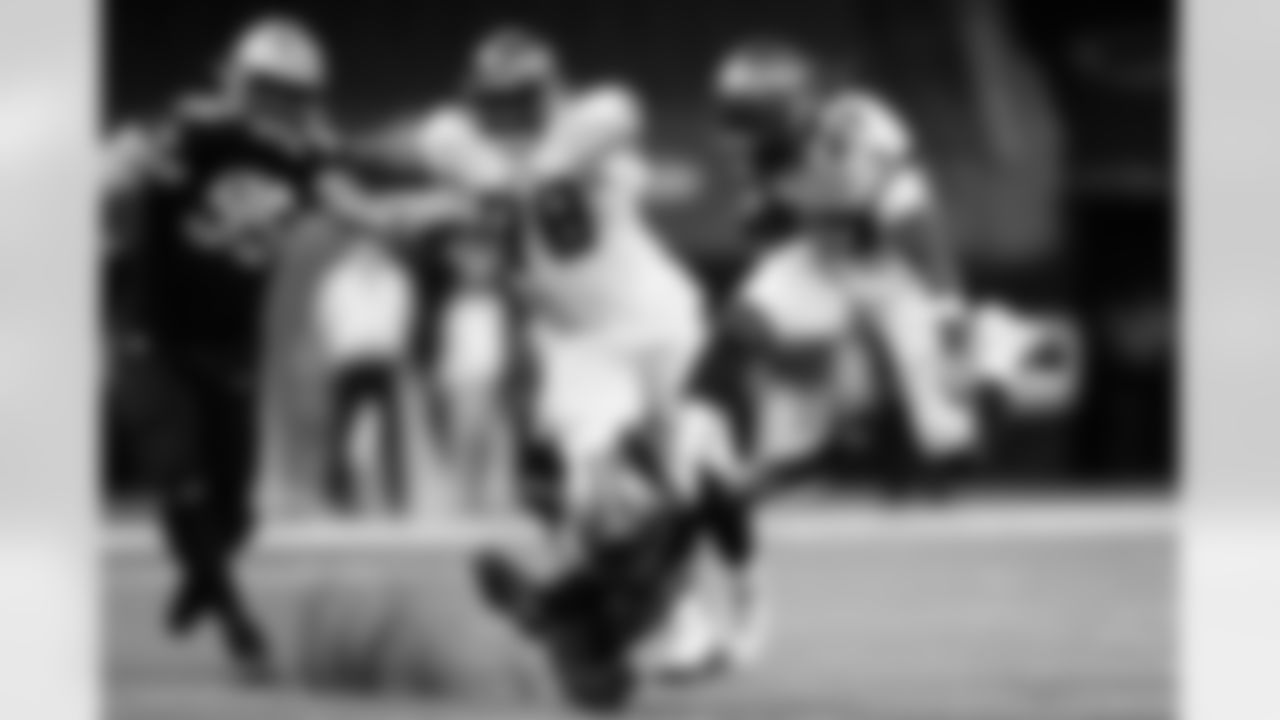
NEW ORLEANS, LA - SEPTEMBER 13, 2020 - Running Back Ronald Jones II #27 of the Tampa Bay Buccaneers during the game between the Tampa Bay Buccaneers and New Orleans Saints at Mercedes Benz Superdome. The Buccaneers lost the game, 34-23. Photo By Kyle Zedaker/Tampa Bay Buccaneers

NEW ORLEANS, LA - SEPTEMBER 13, 2020 - Tight End O.J. Howard #80 of the Tampa Bay Buccaneers catches a touchdown during the game between the Tampa Bay Buccaneers and New Orleans Saints at Mercedes Benz Superdome. The Buccaneers lost the game, 34-23. Photo By Kyle Zedaker/Tampa Bay Buccaneers

NEW ORLEANS, LA - SEPTEMBER 13, 2020 - An empty Mercedes-Benz Superdome during the game between the Tampa Bay Buccaneers and New Orleans Saints. The Buccaneers lost the game, 34-23. Photo By Kyle Zedaker/Tampa Bay Buccaneers

NEW ORLEANS, LA - SEPTEMBER 13, 2020 - Outside Linebacker Jason Pierre-Paul #90 of the Tampa Bay Buccaneers celebrates a sack during the game between the Tampa Bay Buccaneers and New Orleans Saints at Mercedes Benz Superdome. The Buccaneers lost the game, 34-23. Photo By Kyle Zedaker/Tampa Bay Buccaneers

NEW ORLEANS, LA - SEPTEMBER 13, 2020 - Inside Linebacker Lavonte David #54 of the Tampa Bay Buccaneers during the game between the Tampa Bay Buccaneers and New Orleans Saints at Mercedes Benz Superdome. The Buccaneers lost the game, 34-23. Photo By Kyle Zedaker/Tampa Bay Buccaneers

NEW ORLEANS, LA - SEPTEMBER 13, 2020 - Wide Receiver Scotty Miller #10 of the Tampa Bay Buccaneers during the game between the Tampa Bay Buccaneers and New Orleans Saints at Mercedes Benz Superdome. The Buccaneers lost the game, 34-23. Photo By Kyle Zedaker/Tampa Bay Buccaneers

NEW ORLEANS, LA - SEPTEMBER 13, 2020 - Cornerback Ryan Smith #29 of the Tampa Bay Buccaneers during the game between the Tampa Bay Buccaneers and New Orleans Saints at Mercedes Benz Superdome. The Buccaneers lost the game, 34-23. Photo By Kyle Zedaker/Tampa Bay Buccaneers

NEW ORLEANS, LA - SEPTEMBER 13, 2020 - Helmets during the game between the Tampa Bay Buccaneers and New Orleans Saints at Mercedes Benz Superdome. The Buccaneers lost the game, 34-23. Photo By Kyle Zedaker/Tampa Bay Buccaneers

NEW ORLEANS, LA - SEPTEMBER 13, 2020 - Cornerback Jamel Dean #35 of the Tampa Bay Buccaneers during the game between the Tampa Bay Buccaneers and New Orleans Saints at Mercedes Benz Superdome. The Buccaneers lost the game, 34-23. Photo By Kyle Zedaker/Tampa Bay Buccaneers

NEW ORLEANS, LA - SEPTEMBER 13, 2020 - Wide Receiver Scotty Miller #10 of the Tampa Bay Buccaneers during the game between the Tampa Bay Buccaneers and New Orleans Saints at Mercedes Benz Superdome. The Buccaneers lost the game, 34-23. Photo By Kyle Zedaker/Tampa Bay Buccaneers

NEW ORLEANS, LA - SEPTEMBER 13, 2020 - Head Coach Bruce Arians of the Tampa Bay Buccaneers during the game between the Tampa Bay Buccaneers and New Orleans Saints at Mercedes Benz Superdome. The Buccaneers lost the game, 34-23. Photo By Kyle Zedaker/Tampa Bay Buccaneers

NEW ORLEANS, LA - SEPTEMBER 13, 2020 - Quarterback Tom Brady #12 of the Tampa Bay Buccaneers and Drew Brees after the game between the Tampa Bay Buccaneers and New Orleans Saints at Mercedes Benz Superdome. The Buccaneers lost the game, 34-23. Photo By Kyle Zedaker/Tampa Bay Buccaneers



NEW ORLEANS, LA - SEPTEMBER 13, 2020 - Quarterback Tom Brady #12 of the Tampa Bay Buccaneers celebrates a touchdown before the game between the Tampa Bay Buccaneers and New Orleans Saints at Mercedes Benz Superdome. The Buccaneers lost the game, 34-23. Photo By Matt May/Tampa Bay Buccaneers
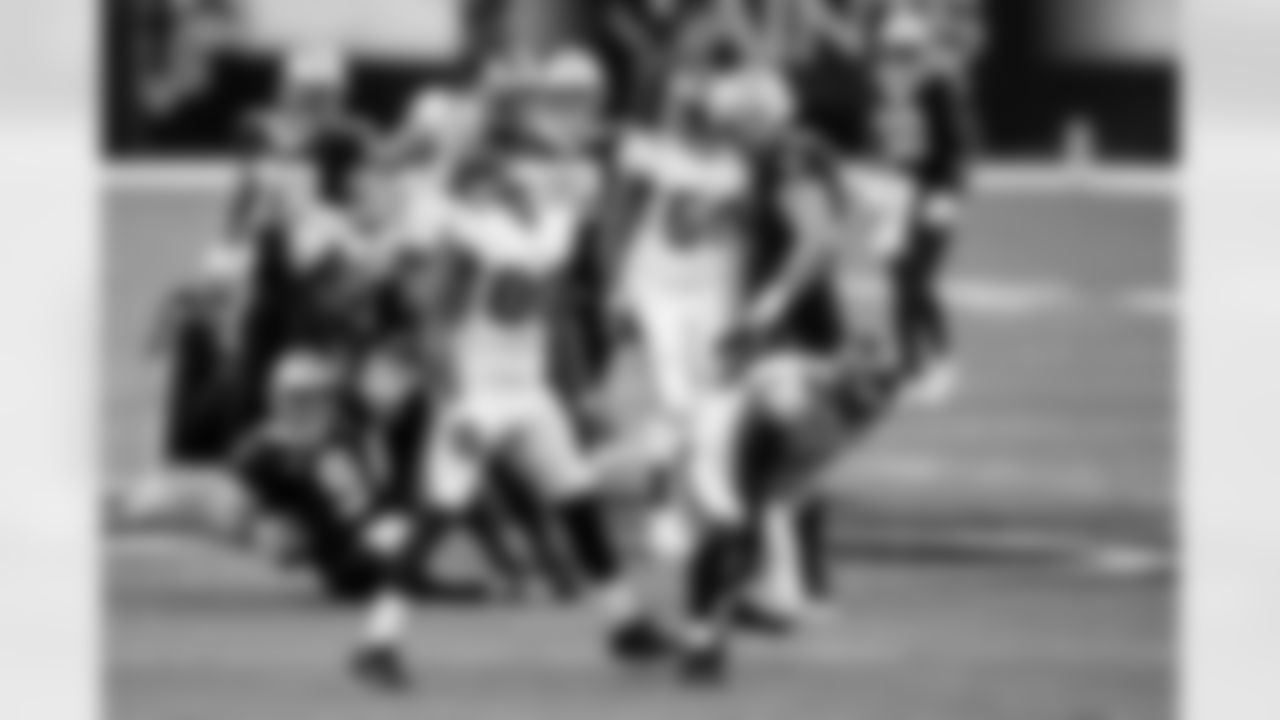
NEW ORLEANS, LA - SEPTEMBER 13, 2020 - Outside Linebacker Jason Pierre-Paul #90 of the Tampa Bay Buccaneers celebrates a sack before the game between the Tampa Bay Buccaneers and New Orleans Saints at Mercedes Benz Superdome. The Buccaneers lost the game, 34-23. Photo By Matt May/Tampa Bay Buccaneers
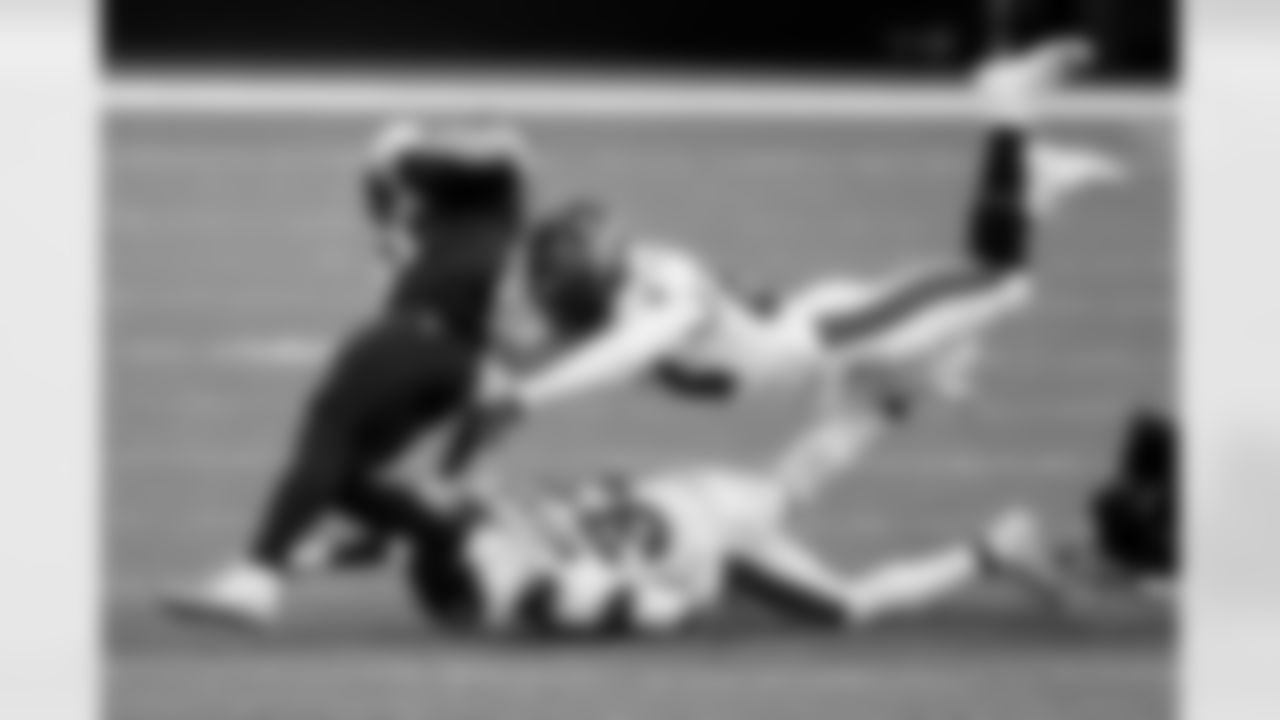
NEW ORLEANS, LA - SEPTEMBER 13, 2020 - Inside Linebacker Lavonte David #54 of the Tampa Bay Buccaneers before the game between the Tampa Bay Buccaneers and New Orleans Saints at Mercedes Benz Superdome. The Buccaneers lost the game, 34-23. Photo By Matt May/Tampa Bay Buccaneers
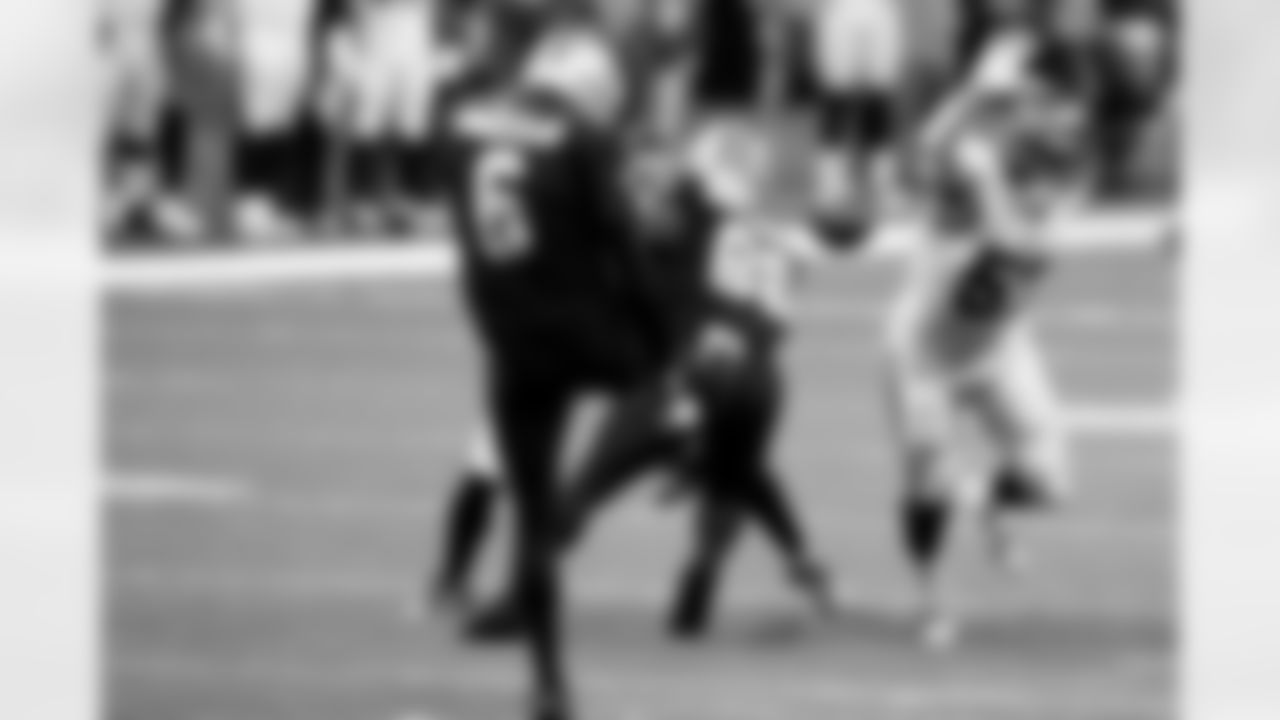
NEW ORLEANS, LA - SEPTEMBER 13, 2020 - Outside Linebacker Quinton Bell #57 of the Tampa Bay Buccaneers before the game between the Tampa Bay Buccaneers and New Orleans Saints at Mercedes Benz Superdome. The Buccaneers lost the game, 34-23. Photo By Matt May/Tampa Bay Buccaneers
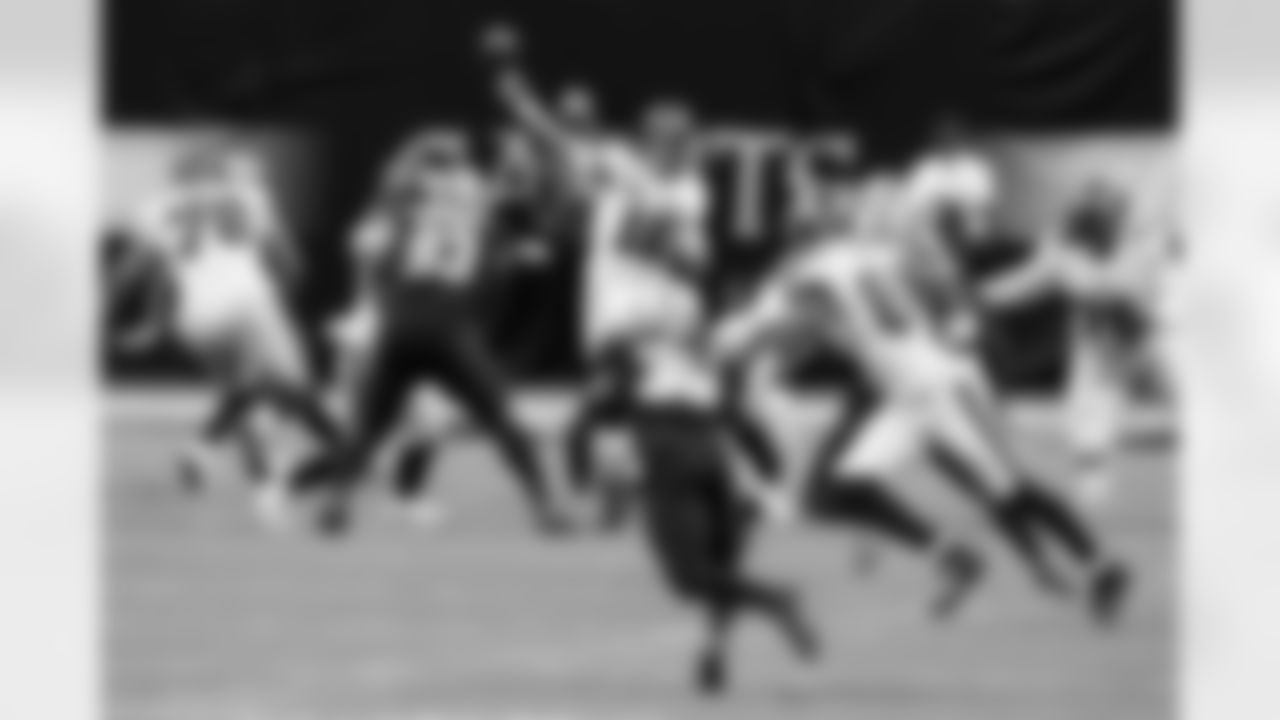
NEW ORLEANS, LA - SEPTEMBER 13, 2020 - Quarterback Tom Brady #12 of the Tampa Bay Buccaneers before the game between the Tampa Bay Buccaneers and New Orleans Saints at Mercedes Benz Superdome. The Buccaneers lost the game, 34-23. Photo By Matt May/Tampa Bay Buccaneers
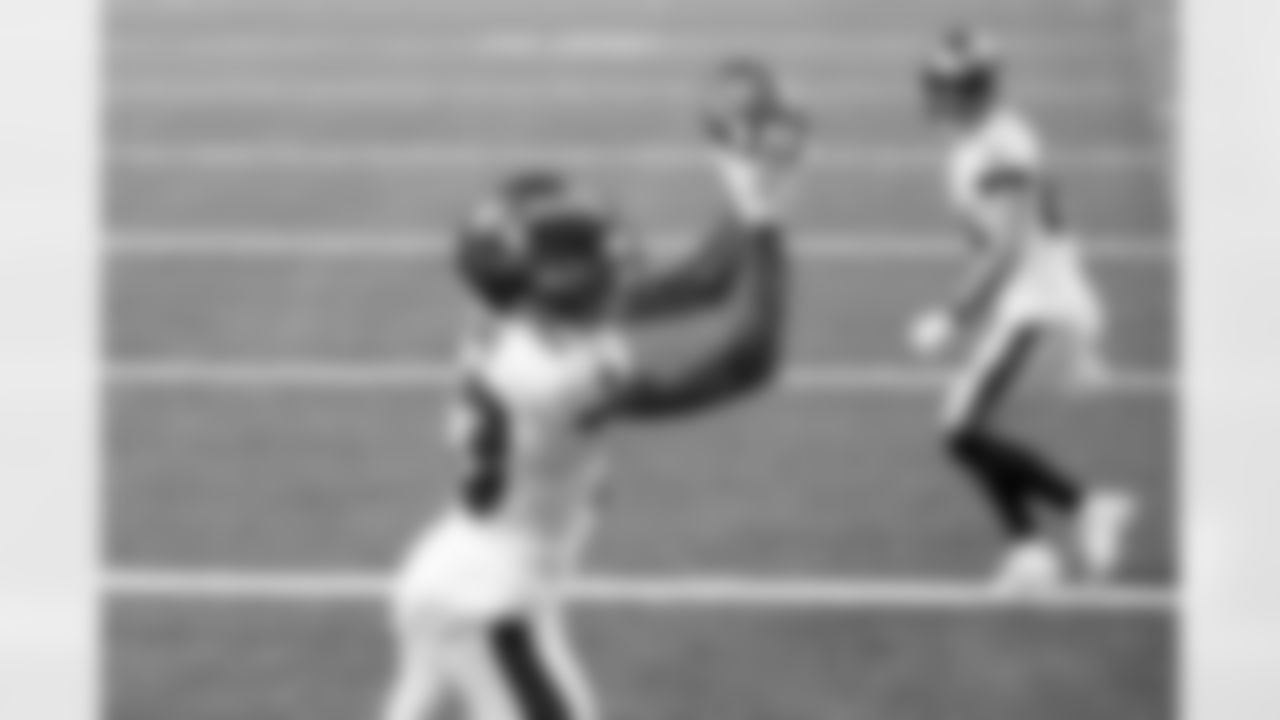
NEW ORLEANS, LA - SEPTEMBER 13, 2020 - Wide Receiver Mike Evans #13 of the Tampa Bay Buccaneers catches a touchdown before the game between the Tampa Bay Buccaneers and New Orleans Saints at Mercedes Benz Superdome. The Buccaneers lost the game, 34-23. Photo By Matt May/Tampa Bay Buccaneers
Watson had the highest peak speed for any Buccaneer on the Superdome turf, at 21.07 miles per hour. Here were the top five Bucs' speedsters in terms of peak MPH in Week One:
1. WR Justin Watson: 21.07
2. CB Ryan Smith: 21.03
3. CB Jamel Dean: 20.93
4. WR Scotty Miller: 20.35
5. S Mike Edwards: 19.96
The fact that Watson, Smith, Dean and Edwards are all near the top of the list indicates that players probably get to go all-out most often on punt and kickoff coverage. Those four players played, respectively, 64%, 82%, 73% and 64% of the Bucs' special teams snaps on Sunday. Miller didn't play on special teams so probably had the fastest route run on offense in the game. Of the other four, only Dean played at least 50% of the snaps on either offense or defense.
Who ran the farthest on Sunday? That would be Dean, which makes sense given that he played quite a bit on both defense (51% of the snaps) and special teams (73%). Dean covered a total distance of 1,370.26 yards during the three-hour, 21-minute game. Here are the five Bucs how covered the most ground on Sunday, in terms of total yards:
1. CB Jamel Dean: 1,370.26
2. CB Carlton Davis: 1,238.30
3. CB Sean Murphy-Bunting: 1,174.58
4. S Antoine Winfield, Jr.: 1,106.72
5. S Jordan Whitehead: 1,106.50
That's essentially the team's starting secondary. The offensive player who covered the most ground against the Saints was wide receiver Mike Evans, who falls just behind Whitehead at 1,081.33. Evans, who apparently wasn't bothered by a hamstring injury that kept him out of practice, ran just 2.5 more yards than fellow wide receiver Chris Godwin.
And, finally, which Buccaneer hit top speed for the longest amount of time? Next Gen stats separate player movements into four categories: Walk, Jog, Run and Sprint. Dean sprinted the most yards for the Buccaneers on Sunday by a comfortable margin. Here are the top five Bucs sprinters, in terms of yards put in at their top speed:
1. CB Jamel Dean: 713.00
2. CB Ryan Smith: 595.96
3. WR Justin Watson: 536.87
4. LB Kevin Minter: 487.84
5. S Andrew Adams: 18.76
Here are some more insights from Sunday's game gleaned through the Next Gen database:
Coming After the QB.
Led by Defensive Coordinator Todd Bowles in his first season with the team, the Buccaneers had one of the NFL's most aggressive defenses in 2019 in terms of sending extra pass-rushers. The Bucs' blitzed on 42% of their opponents' drop-backs last year, the second-highest rate in the NFL. Dating back to his time as the Jets' head coach, Bowles's defenses have finished in the top six in that category in each of the last four years.
Don't expect that to change in 2020. On Sunday, the Buccaneers came after Drew Brees with five or more pass-rushers on 43.8% of his dropbacks. It didn't work particularly well in the first half, as the Bucs' defense did not notch a sack or even a pressure on any of their seven blitzes, though Brees also didn't gain much on those plays, with two completions for 12 yards. The Bucs also blitzed seven times in the second half, with more success, at least in terms of generating pressure. Their one sack and all three of their pressures came on those seven plays. However, Brees also completed two passes for 48 yards and a touchdown against those seven second-half blitzes.
More Shotgun in 2020?
It may be simply a matter of a very small sample size and a one-game fluke, or it may be that Tom Brady prefers to take more snaps out of the shotgun.
Last year, across all 16 game the Buccaneers ran 52.9% of their plays out of the shotgun and 46.8% with the quarterback under center. (Three other plays were identified by Next Gen as "pistol" or "wildcat."). On Sunday, with Brady at the helm, the Buccaneers ran 61.5% of their plays out of the shotgun and 38.5% with the quarterback under center.
It most likely is a one-game splash of numbers that won't mean anything in the long run. It's worth noting that in 2019, with Brady still in New England, the Patriots were a near split between shotgun (50.7%) and under center (48.2%).
View photos of the Tampa Bay Buccaneers 53-man roster.

S Andrew Adams

OLB Shaquil Barrett

RB Le'Veon Bell

RB Giovani Bernard

QB Tom Brady

TE Cameron Brate

OLB K.J. Britt

G Alex Cappa

CB Ross Cockrell

WR Jaelon Darden

ILB Lavonte David

CB Carlton Davis III

CB Jamel Dean

CB Dee Delaney

CB Pierre Desir
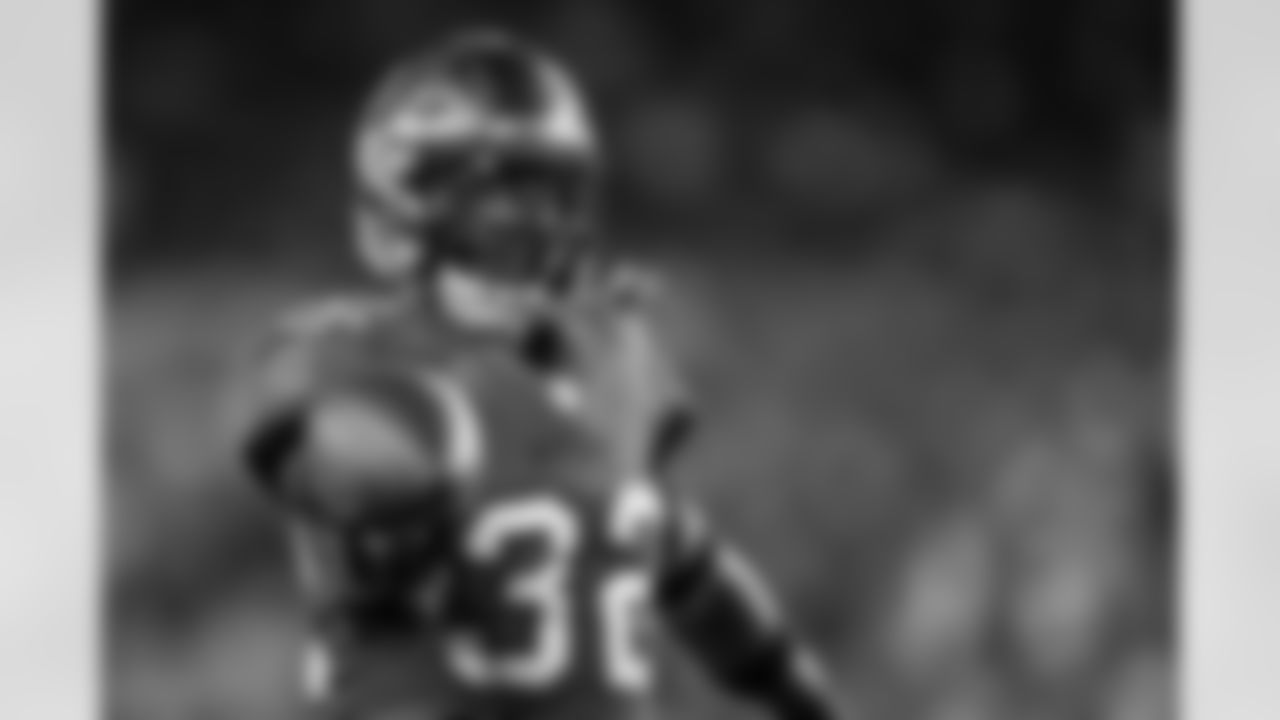
S Mike Edwards

WR Mike Evans
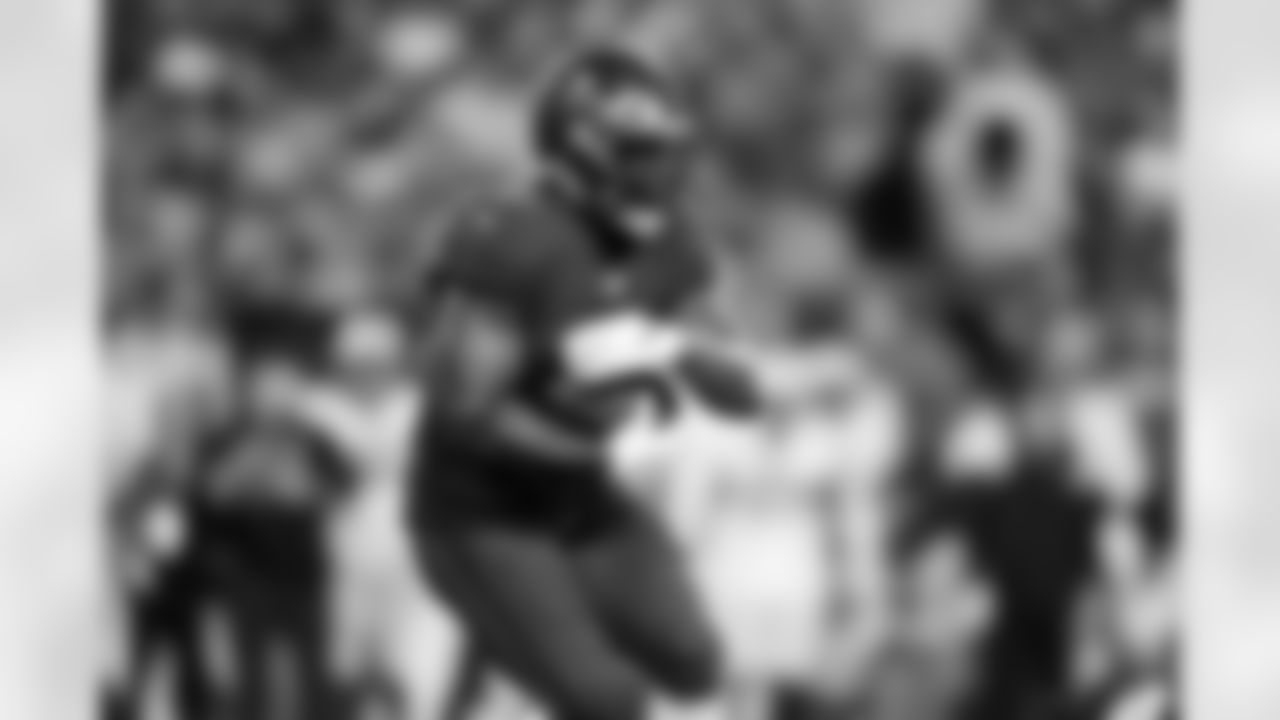
RB Leonard Fournette

QB Blaine Gabbert

DL William Gholston

OLB Cam Gill

WR Cyril Grayson Jr.

TE Rob Gronkowski

OL Robert Hainsey

TE O.J. Howard

C Ryan Jensen

WR Tyler Johnson

RB Ronald Jones II

G Nick Leverett

G Ali Marpet

DT Steve McLendon

WR Scotty Miller

ILB Kevin Minter

CB Sean Murphy-Bunting

OLB Anthony Nelson
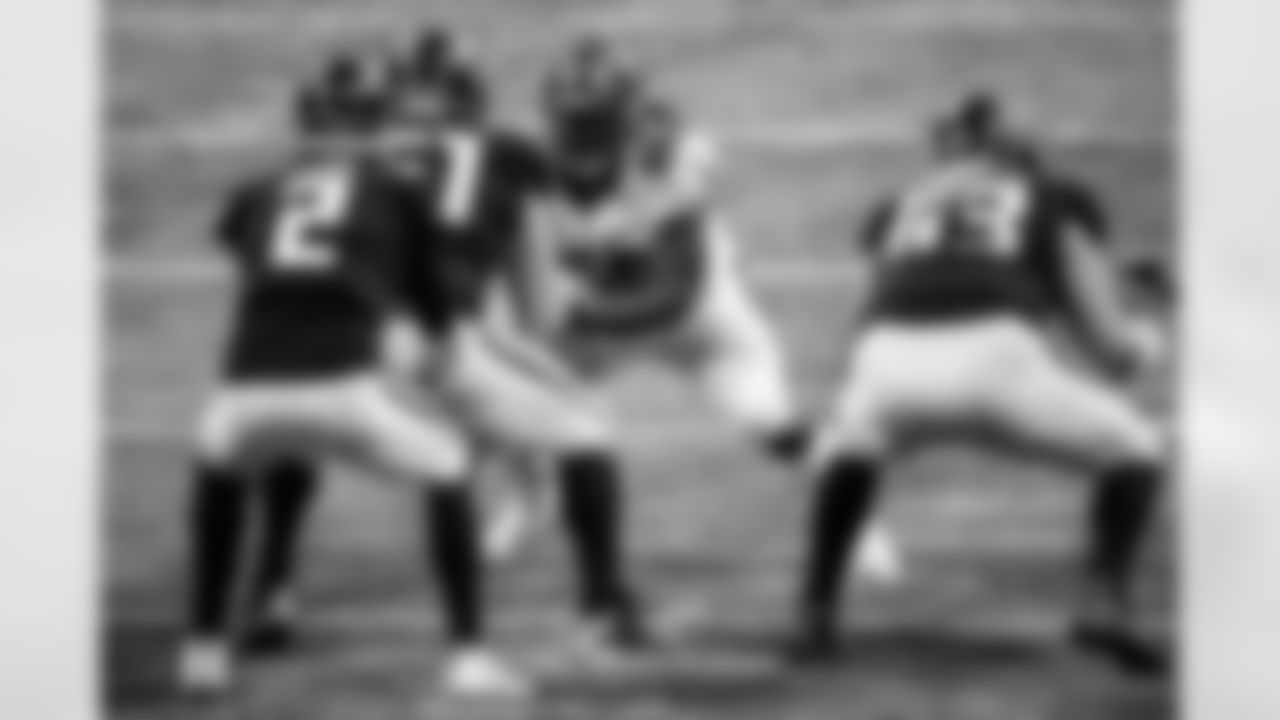
DT Rakeem Nunez-Roches
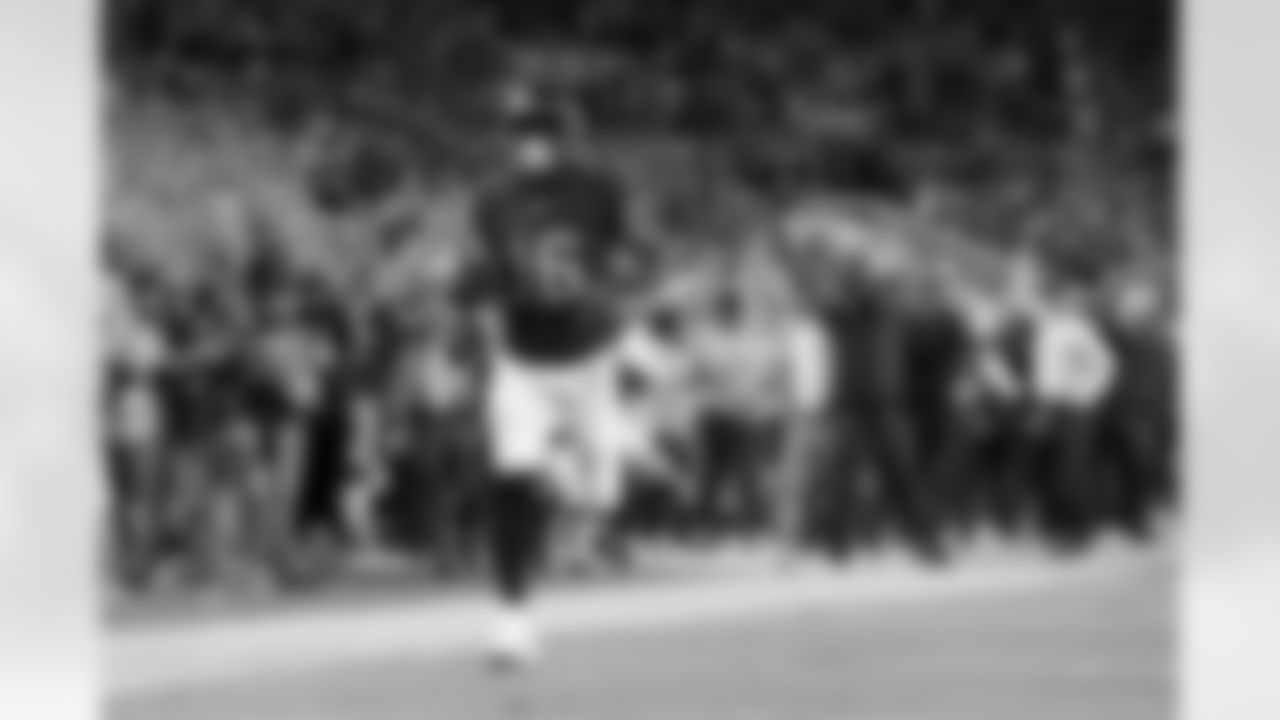
WR Breshad Perriman

OLB Jason Pierre-Paul

P Bradley Pinion

CB Rashard Robinson

OT Donovan Smith

G Aaron Stinnie

ILB Grant Stuard

K Ryan Succop

DL Ndamukong Suh

QB Kyle Trask

LS Zach Triner

OLB Joe Tryon-Shoyinka

RB Ke'Shawn Vaughn
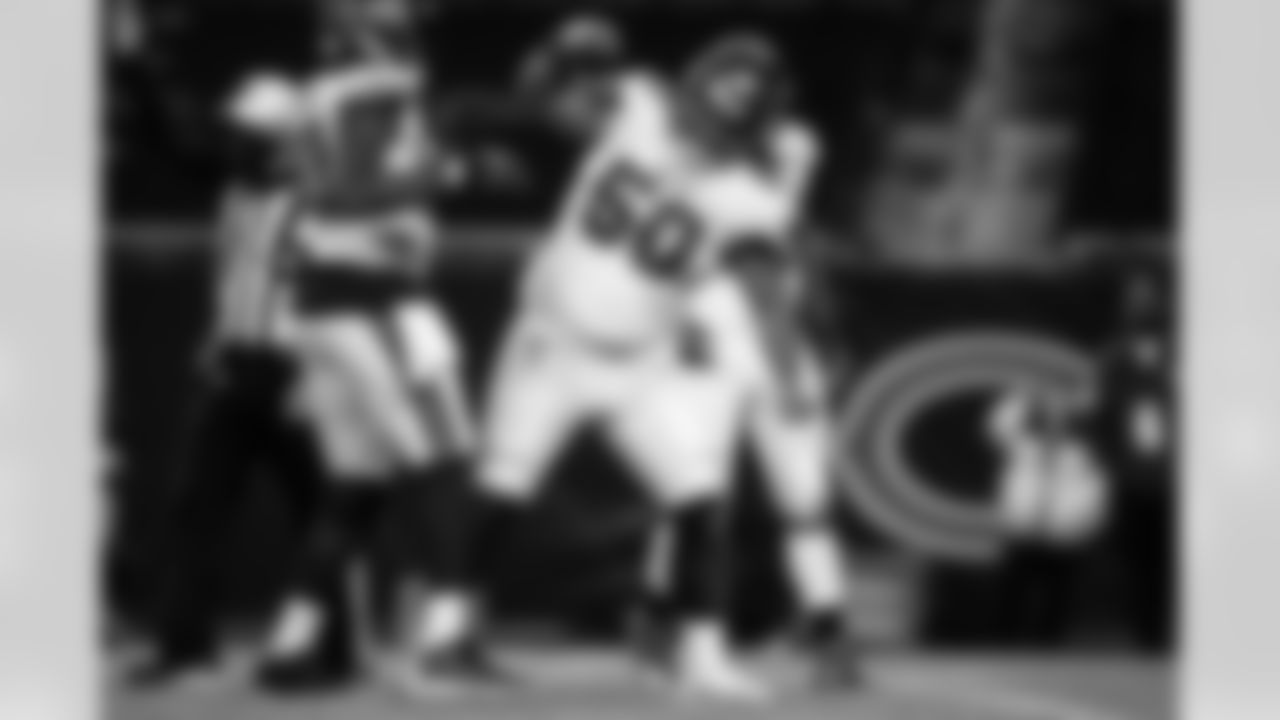
DT Vita Vea

WR Justin Watson

OT Josh Wells
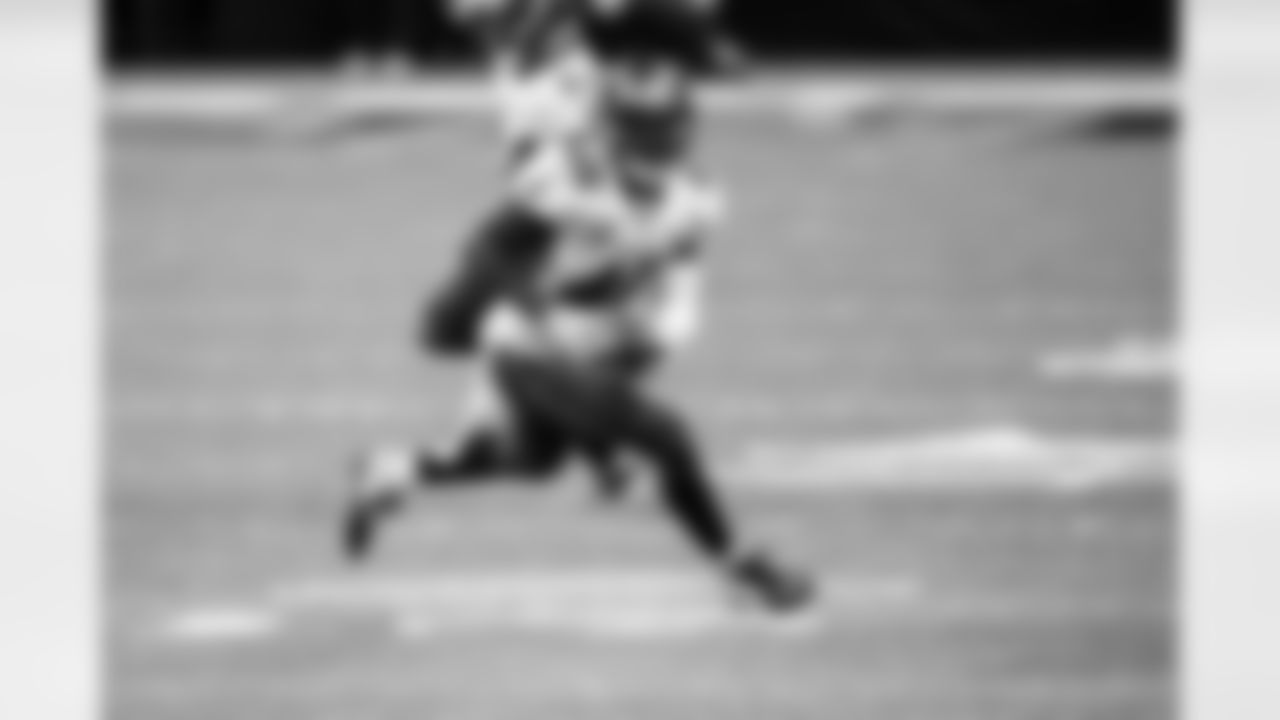
ILB Devin White

S Jordan Whitehead

S Antoine Winfield Jr.
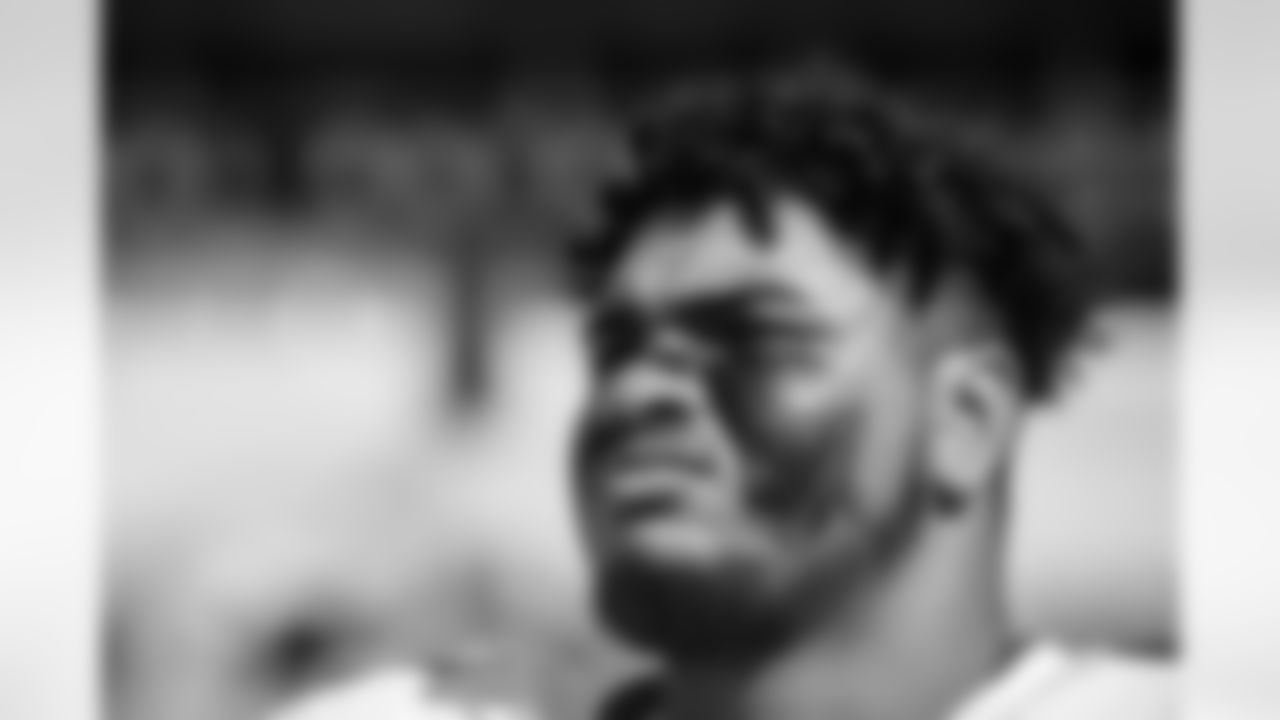
T Tristan Wirfs
Less Than a Nickel.
Though the Buccaneers' official depth chart lists its starting 11 on defense as three down linemen, four linebackers (two outside, two inside) and four defensive backs, their most common package is the "nickel," with five defensive backs on the field. Usually, it's one of the three down linemen who come off for the fifth DB, but there are some other groupings that fall into that nickel category.
Like most teams, the Bucs are in the nickel on the majority of their snaps because most offenses default to three-receiver sets on the majority of their snaps. Last year, the Buccaneers had exactly five defensive backs on the field for 698 snaps, or 65.2% of their total plays.
That percentage was much lower in the season opener, which of course is dictated by the opposing offense. The Bucs were only in the nickel on 50% of their defensive snaps against the Saints, with the "base defense" (three down linemen, two OLBs, two ILBs and four DBs) on the field for 42.4% of their plays.
The Saints only had three receivers on the field for 31 of their 66 plays on Sunday. In this case, it wasn't that New Orleans was lining up in 12 personnel and trying to ram the ball down the Bucs' throat. Rather, the issue in this game was the Saints had so many different groupings. New Orleans employed an incredible 13 different groupings, in terms of how many quarterbacks, linemen, receivers, tight ends and running backs were on the field. In contrast, the Bucs' offense used five different packages.
All of this is multiplied significantly by the presence of Taysom Hill, as the Saints are one of a very few teams to utilize two quarterbacks at the same time. Hill played 17 offensive snaps on Sunday and the Saints used five different personnel groupings on those 17 plays. Three of those five groupings included either one or zero wide receivers.
The Saints were probably smart to not go overboard with 11 personnel, which would attract the Bucs' nickel defense. According to Next Gen stats, the Buccaneers' defense had a success rate of 64% when it had five defensive backs on the field, compared to 36% in its base defense. The Saints gained 4.46 yards per play and scored two of their touchdowns against the Bucs' base defense, as compared to 4.14 yards per play and one touchdown on five more snaps against the nickel.





































